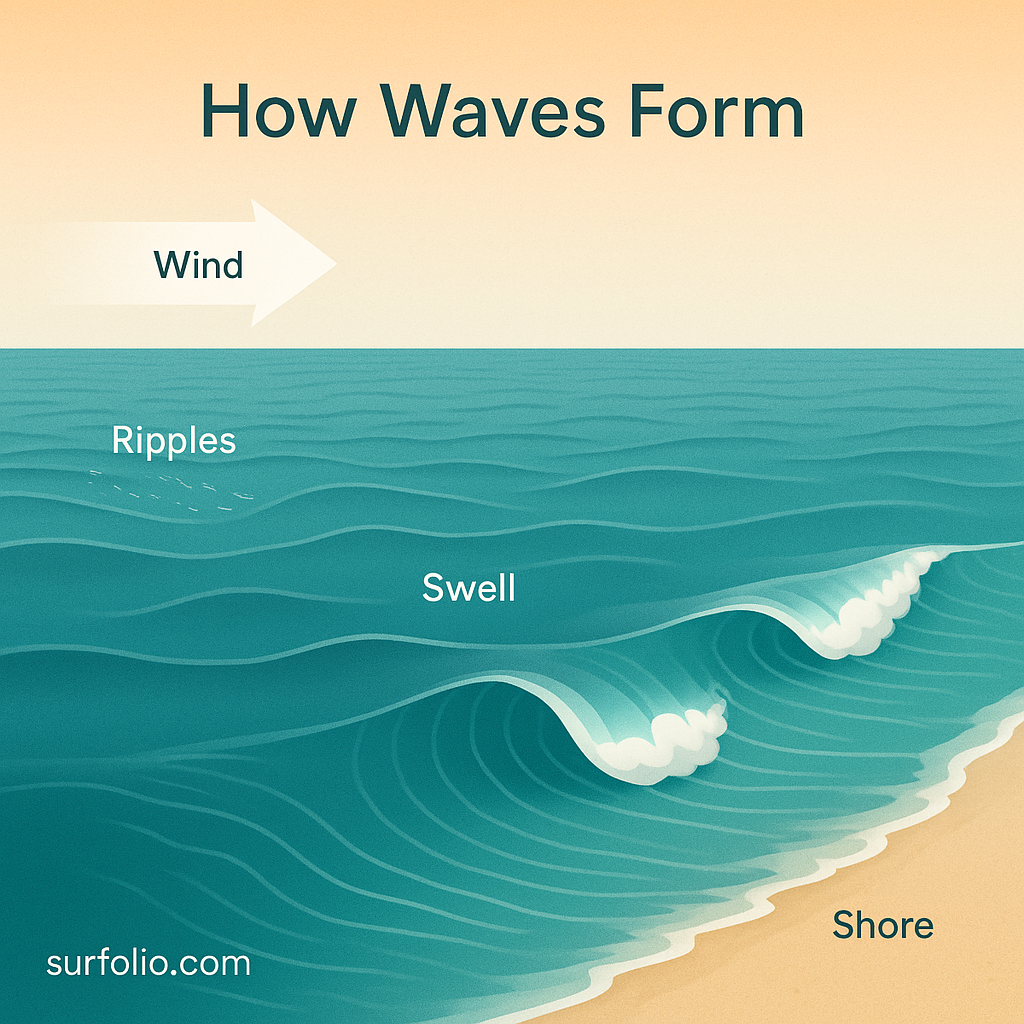
The Beauty Behind Every Wave
Every perfect wave that breaks near shore began as a ripple hundreds or even thousands of miles away. Surfing might look effortless, but the science behind a single ride is a fascinating combination of wind, energy, and physics at work across the planet.
What Causes Ocean Waves?
Ocean waves are created when wind transfers energy to the water’s surface. The stronger and longer the wind blows, the more energy is transferred, creating larger and more powerful swells.
Three key factors determine the size and quality of waves:
- Wind speed – Faster winds generate greater force on the surface.
- Wind duration – The longer the wind blows, the more energy it transfers.
- Fetch – The distance over which the wind travels uninterrupted across open water.
Together, these elements shape the waves that surfers chase worldwide.
The Journey of a Wave
Once wind energy moves into the water, it creates ripples that grow into swell trains — organized energy pulses traveling across the ocean. These swells can journey for thousands of miles with minimal energy loss until they finally meet shallow coastal waters.
As they approach land, the base of the wave drags against the ocean floor. Friction slows the lower part of the wave, while the upper part keeps moving at full speed — this causes the familiar rise, curl, and break of a surfable wave.
The Science of Wave Energy
Waves don’t carry water across the ocean — they carry energy. The water molecules move in small circular orbits, passing energy forward. Think of it as a stadium wave: the fans don’t move seats, but the motion travels around the stadium.
This energy transfer explains why waves can travel across entire oceans. Swells that begin in Antarctica, for example, can reach Indonesia or Hawaii with almost no loss of shape.
Why Different Waves Break Differently
The way a wave breaks depends on the shape of the ocean floor (bathymetry), the angle of the swell, and the tide level.
- Beach breaks (like Canggu or Hossegor) break over sand, creating ever-changing peaks.
- Reef breaks (like Uluwatu or Teahupo’o) break over coral, producing consistent, powerful barrels.
- Point breaks (like Malibu or Jeffreys Bay) peel along rocky headlands, offering long, perfect rides.
A steep seabed creates fast, hollow waves. A gradual slope produces softer, rolling waves ideal for beginners.
The Role of Period and Wavelength
A wave’s period — the time between each crest — determines how much energy it holds.
- Short-period swells (under 8 seconds) are usually wind-chop: messy, disorganized, and weak.
- Long-period swells (12–20+ seconds) pack more power, travel farther, and create clean, surfable lines.
The wavelength (distance between wave crests) also increases with period — the longer the wavelength, the deeper the energy runs beneath the surface.
When Waves Finally Break
A wave breaks when its height-to-depth ratio reaches a critical point — usually when the water depth is about 1.3 times the wave height. For example, a six-foot wave begins to break when the water below is around eight feet deep.
At that moment, gravity takes over. The top of the wave outruns the base, curling forward into the beautiful face surfers know and love.
Why This Matters to Surfers
Understanding the physics of wave formation helps surfers predict conditions and improve their timing. When you know where swells are born and how they behave, you’re not guessing — you’re reading the ocean’s language.
Knowledge of fetch zones, wind direction, and swell period turns an average surfer into an intuitive ocean navigator.
Final Thoughts
Every wave tells a story — one that begins with a whisper of wind and ends in a moment of pure energy meeting the shore. The better you understand that story, the deeper your connection to surfing becomes. Waves aren’t random; they’re nature’s rhythm, shaped by physics and perfected by time.
